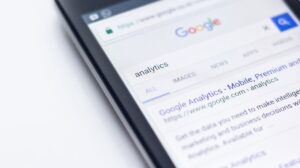As you’re probably aware, PPC can serve as a valuable component of your marketing strategy. It has the potential to provide a considerable return on your investment. But did you know that around 30% of your budget can be lost to fraudulent clicks? These are performed by individuals, computer programs or scripts to generate invalid charges.
Click fraud can be perpetuated by ad publishers and even your competitors. They can also come as a result of users repeatedly clicking links on paid search advertisements to visit a website instead of reaching it the traditional way. While more unintentional than fraudulent, it has the same effect.
So, what’s the solution? Click forensics is your best bet. Available in the form of a data-driven tool, click forensics allows you to mitigate the risk of fraudulent clicks and get more out of your marketing dollars. Read on to learn more.
Click Forensics Explained
While the term might conjure up images of detectives and crime scene investigations, click forensics doesn’t have much in common with police work. And unless you’re technically inclined, you likely won’t find it particularly exciting.
But click forensics makes up for its lack of drama with immense value and utility. With a bit of know-how, you can use it to analyze certain data points and determine whether a click or group of clicks is not leading to the intended outcome. When a fraudulent click is identified, you can request an investigation and apply for a click fraud refund.
More importantly, you can block the source (IP) of the click. This prevents it from being able to target your ads in the future. That’s why marketing experts consider click forensics essential to their ad campaigns.
Why Doesn’t This Happen Automatically?
Google Ads already has measures in place to detect and prevent click fraud. It would be a far more common problem if that wasn’t the case. The caveat is that Google’s systems aren’t capable of analyzing every possible data point when determining whether a click is valid, so there will always be a few that manage to slip through the cracks.
This weakness is naturally exploited, and the systems responsible for making that happen are becoming more and more effective. That’s why you need to step in and establish an additional layer of defense against click fraud.
Key Elements for Analysis
Before we get into the tools that you can use to keep your ads safe, let’s learn a little more about what exactly they do. The easiest way to do this is by understanding the seven data components involved in analyzing a click.
1. The Click Segment
This details what a user does on your website after they click your ad. You can see how much time they spent browsing and whether they have visited your site before. It also lets you know whether a conversion occurred. Real people behave differently to bots, and the latter is usually responsible for the fraudulent click.
2. The Platform Segment
Here’s where you can see data related to browser fingerprints and the device being used. The absence of a fingerprint is indicative of click fraud, as each device has a unique one. If you can’t identify properties such as the browser and operating system making the click, then you can safely assume that it’s part of a bot network.
3. Target Segment
In addition to landing page information, the target segment tracks the Google Click Identifier (GCLID). Every click has a unique GCLID value. If you see the same one popping up over and over from different devices or IP addresses, then there is reason for suspicion.
4. Visitor Segment
Speaking of devices and IP addresses, information related to those data points can be found in the visitor segment. A sudden influx of clicks from the same IP address is one of the biggest giveaways of click fraud. By identifying the source, you can set rules to block a suspicious IP range from your ads.
5. Ad Info Segment
This displays the correlation between the click and structure of your ad campaign. If you notice a high number of clicks on your most expensive keywords, for instance, then it’s probably no accident.
6. Threat Segment
Several data points are included here, each contributing to a more comprehensive image of the risk level from a click. The threat segment will show you whether the click comes from a proxy server and whether it was performed by a bot.
7. Geo Segment
You can probably guess what the last one does. The geo segment details what region the click originated from. It’s a useful piece of information, especially now that it’s becoming increasingly difficult to determine. Clicks that are coming from areas outside of your targeted locations are usually fraudulent or of little to no value.
Putting it Together
The above-listed components and their associated data points serve as your tools for identifying fraudulent clicks. Using them to their full potential requires understanding the patterns that indicate a cause for concern.
We’ve already gone through a few, such as high volumes of clicks from the same IP address and the absence of unique browser fingerprints. Clicks that come from outside your geo-targeted areas are another pattern to keep an eye out for. The same is true for unrealistic screen resolutions and inflated amounts of short visits.
Done right, your click forensics system can easily identify fraudulent sources. Once you have the necessary information, you can submit a request to Google Ads for further investigation. Don’t forget that you can also block the IP address so that it no longer harms your campaigns.
Performing Click Forensics
Here’s the thing – performing click forensics yourself is a real time suck. Plus, you probably have a ton of other marketing activities to carry out. Analyzing the sources of your clicks by hand, while beneficial, can be tedious.
Fortunately, there are tools available that can do it all for you. ClickGUARD is one of the services that will identify and block fraudulent activity with minimal input from your side. Be sure to consider it if you want to invest in click forensics, as it can provide a comprehensive overview of every click and maximize the ROI of your marketing investments.
Remember that fraudulent clicks can throw around 30% of your budget down the drain, so having a system in place that can significantly reduce your risk of being affected by click fraud is a no-brainer. This is especially true if you opt for an automated tool that does all of the work.
It’s worth noting that click forensics can do more than just protect your ads from fraudulent activity. The deep insight that it provides can help you learn a lot more about who exactly is interacting with your ads. You can then use that information to improve your marketing campaigns and stretch your budget even further.
Anyone involved in PPC should consider incorporating click forensics into their arsenal of marketing tools. There’s much to gain from doing so, and only time will tell just how valuable the information you obtain can be. Since you won’t be losing money to fraudulent clicks, you’ll have more funds to put towards strengthening your marketing campaigns. Take a look at the click forensics solutions available today and consider giving it a try.





